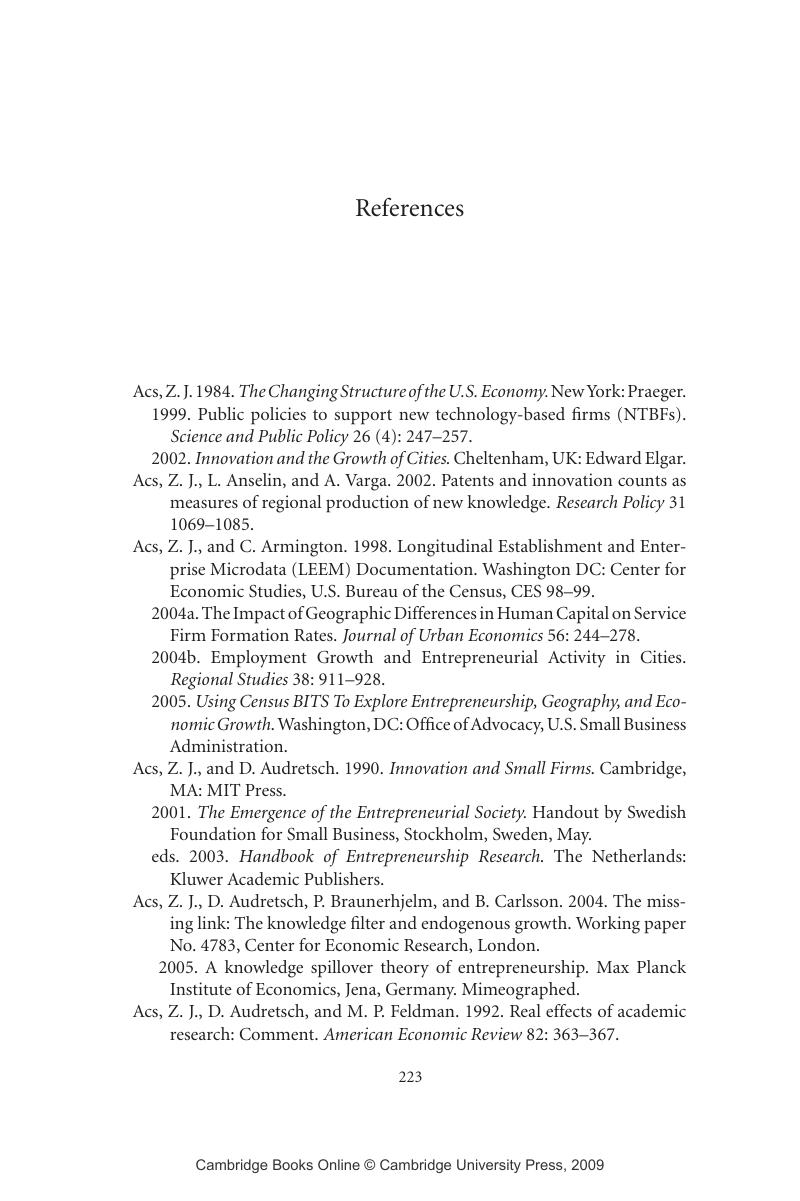Book contents
- Frontmatter
- Contents
- List of Tables and Figures
- Preface
- 1 Introduction
- 2 Entrepreneurship, Geography, and Growth
- 3 Regional Variation in Entrepreneurial Activity
- 4 Human Capital and Entrepreneurship
- 5 Entrepreneurship and Employment Growth
- 6 Summary and Theoretical Insights
- 7 A Formulation of Entrepreneurship Policy
- Appendix A: Firm Formation and Growth Data from the Longitudinal Establishment and Enterprise Microdata (LEEM)
- Appendix B: 1995 + 1996 Firm Formation Rates for U.S. Labor Market Areas with 1994 Labor Force and Establishments
- Appendix C: Service Industry Standard Industrial Classification (4-digit SIC) Codes and Their Subsectors, with 1995 Establishment and Employment and Changes to 1998, and 1996 through 1998 Firm Formations per 100 Establishments in Subsector in 1995
- Appendix D: 1991–1996 Employment Growth Rates and Share of High-Growth Establishments in Labor Market Areas, with 1991 Employment, Establishments, and Population, and 1991–1996 Population Growth and Relative Employment Growth Rates
- References
- Index
- References
References
Published online by Cambridge University Press: 31 July 2009
- Frontmatter
- Contents
- List of Tables and Figures
- Preface
- 1 Introduction
- 2 Entrepreneurship, Geography, and Growth
- 3 Regional Variation in Entrepreneurial Activity
- 4 Human Capital and Entrepreneurship
- 5 Entrepreneurship and Employment Growth
- 6 Summary and Theoretical Insights
- 7 A Formulation of Entrepreneurship Policy
- Appendix A: Firm Formation and Growth Data from the Longitudinal Establishment and Enterprise Microdata (LEEM)
- Appendix B: 1995 + 1996 Firm Formation Rates for U.S. Labor Market Areas with 1994 Labor Force and Establishments
- Appendix C: Service Industry Standard Industrial Classification (4-digit SIC) Codes and Their Subsectors, with 1995 Establishment and Employment and Changes to 1998, and 1996 through 1998 Firm Formations per 100 Establishments in Subsector in 1995
- Appendix D: 1991–1996 Employment Growth Rates and Share of High-Growth Establishments in Labor Market Areas, with 1991 Employment, Establishments, and Population, and 1991–1996 Population Growth and Relative Employment Growth Rates
- References
- Index
- References
Summary

- Type
- Chapter
- Information
- Entrepreneurship, Geography, and American Economic Growth , pp. 223 - 236Publisher: Cambridge University PressPrint publication year: 2006



